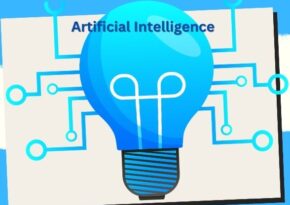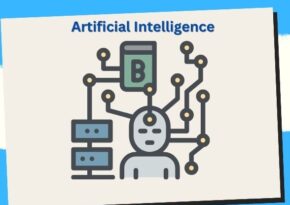
Boost Sales Efficiency: Harnessing Machine Learning for Forecasting
Discover how machine learning revolutionizes sales forecasting, providing businesses with accurate predictions to optimize inventory, staffing, and marketing strategies.
Mastering Sales Forecasting: A Humanized Approach with Machine Learning
In the ever-evolving landscape of sales and commerce, accurate forecasting is the cornerstone of success. Traditionally, sales forecasting relied on historical data and intuition, but with the advent of machine learning, businesses now have a powerful tool at their disposal. Machine learning algorithms can analyze vast amounts of data to uncover patterns, trends, and insights that drive more accurate predictions. But amidst the sea of algorithms and data points, it’s crucial not to lose sight of the human element. Join us as we explore the art of humanized sales forecasting with machine learning, blending cutting-edge technology with empathy, intuition, and real-world insights to unlock new levels of forecasting accuracy and effectiveness.
1. Demystifying Machine Learning in Sales Forecasting
Before we delve into the intricacies of machine learning applications in sales forecasting, let’s first demystify the concept. Machine learning involves the use of algorithms and statistical models to analyze data, identify patterns, and make predictions or decisions without explicit programming instructions. In the context of sales forecasting, machine learning algorithms can analyze historical sales data, market trends, and external factors to generate more accurate and reliable forecasts.
2. The Power of Machine Learning in Sales Forecasting
Now, let’s explore the transformative power of machine learning in sales forecasting. By leveraging advanced algorithms and predictive analytics techniques, businesses can unlock valuable insights into customer behavior, demand patterns, and market dynamics. This enables more accurate and timely forecasts, which in turn can inform strategic decisions related to inventory management, resource allocation, and revenue projections. Machine learning applications in sales forecasting offer several key benefits, including:
- Improved Accuracy: Machine learning algorithms can analyze large volumes of data and identify complex patterns and relationships that may not be apparent to human analysts, leading to more accurate forecasts.
- Real-Time Insights: Machine learning models can adapt and learn from new data in real-time, enabling businesses to generate up-to-date forecasts and respond quickly to changing market conditions.
- Scalability: Machine learning algorithms can handle large and diverse datasets, making them scalable and suitable for businesses of all sizes and industries.
- Automation: Once trained, machine learning models can automate the forecasting process, freeing up valuable time and resources for other tasks.
3. Humanizing Sales Forecasting with Machine Learning
While machine learning offers undeniable benefits in terms of accuracy and efficiency, it’s essential not to overlook the human element. Behind every data point lies a real person with unique needs, preferences, and aspirations. To truly harness the power of machine learning in sales forecasting, businesses must blend data-driven insights with empathy, intuition, and human judgment. This humanized approach ensures that forecasts resonate with stakeholders, align with organizational goals, and drive sustainable growth.
4. Practical Tips for Implementing Machine Learning in Sales Forecasting
Now that we’ve explored the fundamentals let’s equip you with some practical tips for implementing machine learning in your sales forecasting process:
- Define Clear Objectives: Clearly define your sales forecasting objectives and key performance indicators (KPIs) to guide your machine learning initiatives. Determine what metrics are most important to your business and focus your analysis efforts accordingly.
- Collect Relevant Data: Gather relevant data sources, including historical sales data, market trends, and external factors such as economic indicators and industry news. Ensure data quality and integrity by cleaning, preprocessing, and validating your datasets.
- Choose the Right Algorithm: Select the appropriate machine learning algorithm or model for your sales forecasting task. Consider factors such as the type of data, the complexity of the problem, and the interpretability of the model.
- Train and Evaluate the Model: Train your machine learning model on historical data and evaluate its performance using appropriate metrics such as mean absolute error (MAE) or root mean squared error (RMSE). Iterate and refine the model based on feedback and performance metrics.
- Monitor and Update: Continuously monitor the performance of your machine learning model and update it as needed with new data or changes in business conditions. Embrace a culture of experimentation and continuous improvement to drive innovation and enhance forecasting accuracy.
Unveiling the Potential of Machine Learning in Sales Forecasting 🌟
1. Understanding Machine Learning: The Science of Predictive Analytics 🔍
Machine learning is a branch of artificial intelligence that enables computers to learn from data and make predictions or decisions without being explicitly programmed. In the context of sales forecasting, machine learning algorithms analyze historical sales data to identify patterns and trends, which can then be used to predict future sales performance.
2. The Importance of Sales Forecasting: Anticipating Market Trends and Demand 💡
Sales forecasting is essential for businesses to anticipate market trends, understand customer demand, and make informed decisions about inventory management, resource allocation, and strategic planning. By accurately forecasting sales, businesses can optimize their operations and maximize revenue potential.
3. The Evolution of Sales Forecasting Techniques: From Traditional Methods to Machine Learning 🔄
Traditional sales forecasting methods often relied on simple statistical techniques or expert judgment, which were prone to biases and inaccuracies. With the rise of machine learning, businesses now have access to more sophisticated forecasting models that can analyze vast amounts of data and identify complex patterns that may not be apparent to human analysts.
4. Leveraging Historical Data: Learning from the Past 📊
Historical sales data serves as the foundation for machine learning-based sales forecasting models. By analyzing historical sales patterns, trends, and seasonality, machine learning algorithms can identify underlying factors that drive sales performance and make accurate predictions about future sales.
5. Incorporating External Factors: Considering Market Dynamics 📈
In addition to historical sales data, machine learning models can also incorporate external factors such as economic indicators, market trends, competitor behavior, and consumer sentiment. By considering these external factors, machine learning algorithms can provide more accurate and robust sales forecasts.
6. Adaptive Learning: Continuously Improving Accuracy and Precision 🔄
One of the key advantages of machine learning-based sales forecasting is its ability to adapt and improve over time. As new sales data becomes available, machine learning algorithms can continuously learn and refine their predictions, leading to increasingly accurate and precise forecasts.
7. Scalability and Automation: Handling Large Volumes of Data with Ease 🚀
Machine learning algorithms are highly scalable and can handle large volumes of data with ease. This scalability enables businesses to analyze vast amounts of sales data from multiple sources and generate forecasts quickly and efficiently. Moreover, machine learning models can automate the forecasting process, saving time and resources for businesses.
8. Granular Forecasting: Predicting Sales at a Detailed Level 📊
Machine learning models can provide granular sales forecasts at various levels of detail, such as product categories, geographic regions, customer segments, or individual SKUs. This granularity enables businesses to tailor their forecasting strategies to specific market segments and make more targeted decisions.
9. Risk Assessment and Mitigation: Identifying Potential Challenges 🛑
Machine learning-based sales forecasting models can also identify potential risks and challenges that may impact sales performance, such as supply chain disruptions, economic downturns, or shifts in consumer preferences. By proactively identifying these risks, businesses can implement mitigation strategies to minimize their impact on sales.
10. Strategic Planning and Decision Making: Empowering Business Leaders 📈
Ultimately, machine learning applications in sales forecasting empower business leaders to make strategic decisions with confidence. By providing accurate, data-driven insights into future sales performance, machine learning models enable businesses to allocate resources effectively, set realistic targets, and seize growth opportunities.
Benefits of Machine Learning Applications in Sales Forecasting 🌟
- Improved Accuracy: Generate more accurate sales forecasts compared to traditional methods.
- Enhanced Efficiency: Save time and resources with automated forecasting processes.
- Scalability: Analyze large volumes of sales data with ease, even as your business grows.
- Granularity: Generate forecasts at a detailed level to support targeted decision-making.
- Adaptability: Continuously improve forecasting accuracy over time with adaptive learning.
- Risk Mitigation: Identify and mitigate potential risks that may impact sales performance.
- Strategic Insights: Empower business leaders with data-driven insights for strategic planning.
- Competitive Advantage: Stay ahead of competitors by leveraging advanced forecasting techniques.
- Resource Optimization: Allocate resources effectively based on accurate sales forecasts.
- Revenue Maximization: Maximize revenue potential by aligning sales strategies with market demand.
Case Studies: Real-World Examples of Machine Learning Applications in Sales Forecasting 📊
- Amazon: Utilizes machine learning algorithms to forecast demand for millions of products across its e-commerce platform, enabling optimized inventory management and fulfillment operations.
- Walmart: Leverages machine learning-based sales forecasting models to predict sales at its brick-and-mortar stores and online channels, ensuring optimal stock levels and minimizing stockouts.
- Procter & Gamble: Implements machine learning algorithms to forecast demand for its consumer products, enabling proactive supply chain management and production planning.
- Google: Utilizes machine learning-based sales forecasting models to predict ad impressions and revenue for its online advertising platform, enabling advertisers to optimize their campaigns.
- Uber: Leverages machine learning algorithms to forecast demand for its ride-hailing services in different geographic regions and time periods, enabling efficient driver allocation and pricing strategies.
- Netflix: Implements machine learning-based sales forecasting models to predict viewer engagement and subscription growth, informing content acquisition and production decisions.
- Salesforce: Utilizes machine learning algorithms to forecast sales pipeline and revenue for its CRM platform users, enabling sales teams to prioritize leads and opportunities effectively.
- General Electric: Implements machine learning-based sales forecasting models to predict demand for its industrial products and services, enabling optimized inventory management and service delivery.
- Coca-Cola: Leverages machine learning algorithms to forecast demand for its beverages across various markets and channels, enabling efficient production planning and distribution.
- Tesla: Utilizes machine learning-based sales forecasting models to predict demand for its electric vehicles and energy products, informing production schedules and sales strategies.
Key Takeaways for Implementing Machine Learning Applications in Sales Forecasting 🚀
- Start with a clear understanding of your business objectives and forecasting needs.
- Invest in high-quality data collection and preparation processes to ensure data accuracy and completeness.
- Select the right machine learning algorithms and techniques based on your data characteristics and forecasting goals.
- Incorporate both historical sales data and relevant external factors into your forecasting models for more robust predictions.
- Continuously monitor and evaluate the performance of your forecasting models, iterating and refining as needed.
- Foster collaboration between data scientists, business analysts, and domain experts to ensure alignment between technical capabilities and business requirements.
- Provide training and support for end-users to ensure they understand how to interpret and use the forecasts effectively.
- Consider integrating machine learning-based sales forecasting into your existing business processes and systems for seamless implementation and adoption.
- Stay informed about emerging trends and advancements in machine learning and sales forecasting techniques to remain competitive and future-proof your forecasting strategy.
- Embrace a culture of data-driven decision making, leveraging machine learning insights to drive strategic planning and business growth.
FAQ about Machine Learning Applications in Sales Forecasting: Answering Your Burning Questions 🔥
- What is machine learning, and how does it apply to sales forecasting?
Machine learning is a branch of artificial intelligence that enables computers to learn from data and make predictions or decisions without being explicitly programmed. In sales forecasting, machine learning algorithms analyze historical sales data to predict future sales performance. - What types of data are commonly used in machine learning-based sales forecasting?
Common types of data used in machine learning-based sales forecasting include historical sales data, customer demographics, market trends, economic indicators, and competitor behavior. - How does machine learning improve sales forecasting accuracy compared to traditional methods?
Machine learning algorithms can analyze large volumes of data and identify complex patterns and relationships that may not be apparent to human analysts, leading to more accurate and reliable sales forecasts. - What are some common machine learning algorithms used in sales forecasting?
Common machine learning algorithms used in sales forecasting include linear regression, decision trees, random forests, neural networks, and time series analysis techniques such as ARIMA and exponential smoothing. - How can businesses ensure the accuracy and reliability of their machine learning-based sales forecasts?
Businesses can ensure accuracy and reliability by validating their forecasting models against historical data, conducting sensitivity analyses and scenario planning, and incorporating human expertise and judgment into the forecasting process. - What are some benefits of implementing machine learning applications in sales forecasting?
Benefits include improved accuracy, enhanced efficiency, scalability, granularity, adaptability, risk mitigation, strategic insights, competitive advantage, resource optimization, and revenue maximization. - What are some challenges businesses may face when implementing machine learning-based sales forecasting?
Challenges may include data quality issues, lack of expertise or resources, resistance to change, model complexity, and the need for ongoing monitoring and refinement. - How can businesses justify the investment in machine learning-based sales forecasting?
Businesses can justify the investment by calculating potential cost savings from improved inventory management, reduced stockouts, and increased revenue, as well as potential competitive advantages and strategic insights gained from more accurate forecasts. - Can machine learning-based sales forecasting be integrated with other business processes or systems?
Yes, machine learning-based sales forecasting can be integrated with other business processes and systems such as inventory management, supply chain planning, CRM (Customer Relationship Management) systems, and financial planning and analysis tools. - What are some future trends in machine learning applications in sales forecasting that businesses should keep an eye on?
Future trends may include advancements in AI and deep learning for more sophisticated forecasting models, the integration of real-time data streams and IoT (Internet of Things) sensors for more dynamic forecasts, and the use of blockchain technology for enhanced data transparency and security.
Machine learning applications have revolutionized the field of sales forecasting, enabling businesses to make more accurate, data-driven decisions that drive growth and success. By leveraging machine learning algorithms to analyze historical sales data and predict future performance, businesses can optimize their operations, allocate resources effectively, and seize opportunities for growth in today’s competitive marketplace. 🚀
Conclusion: The Human Touch in Machine Learning-Powered Sales Forecasting
As we conclude our exploration of machine learning applications in sales forecasting, one thing becomes abundantly clear: while technology may drive insights, it’s the human touch that ultimately determines success. By blending data-driven insights with empathy, intuition, and human judgment, businesses can unlock new levels of forecasting accuracy and effectiveness. So, embrace the art of humanized sales forecasting with machine learning – where technology meets empathy, and innovation meets humanity. 🚀
Key Phrases
- Machine learning applications
- Sales forecasting solutions
- Predictive analytics in sales
- Data-driven sales projections
- AI in sales forecasting
- Sales prediction models
- Forecast accuracy improvement
- Sales optimization algorithms
- Predictive sales analytics
- Future sales trends prediction
Best Hashtags
- #MachineLearningSales
- #SalesForecasting
- #PredictiveAnalytics
- #AIinSales
- #DataDrivenDecisions
- #SalesOptimization
- #ForecastAccuracy
- #PredictiveModeling
- #SalesAnalytics
- #FutureSalesTrends
Save/Share this story with QR CODE
Disclaimer
This article is for informational purposes only and does not constitute endorsement of any specific technologies or methodologies and financial advice or endorsement of any specific products or services.
📩 Need to get in touch?
📩 Feel free to Contact NextGenDay.com for comments, suggestions, reviews, or anything else.
We appreciate your reading. 😊Simple Ways To Say Thanks & Support Us:
1.) ❤️GIVE A TIP. Send a small donation thru Paypal😊❤️
Your DONATION will be used to fund and maintain NEXTGENDAY.com
Subscribers in the Philippines can make donations to mobile number 0917 906 3081, thru GCash.
3.) 🛒 BUY or SIGN UP to our AFFILIATE PARTNERS.
4.) 👍 Give this news article a THUMBS UP, and Leave a Comment (at Least Five Words).
AFFILIATE PARTNERS

World Class Nutritional Supplements - Buy Highest Quality Products, Purest Most Healthy Ingredients, Direct to your Door! Up to 90% OFF.
Join LiveGood Today - A company created to satisfy the world's most demanding leaders and entrepreneurs, with the best compensation plan today.



 Business Technology, Finance Technology & Information Technology
Business Technology, Finance Technology & Information Technology





